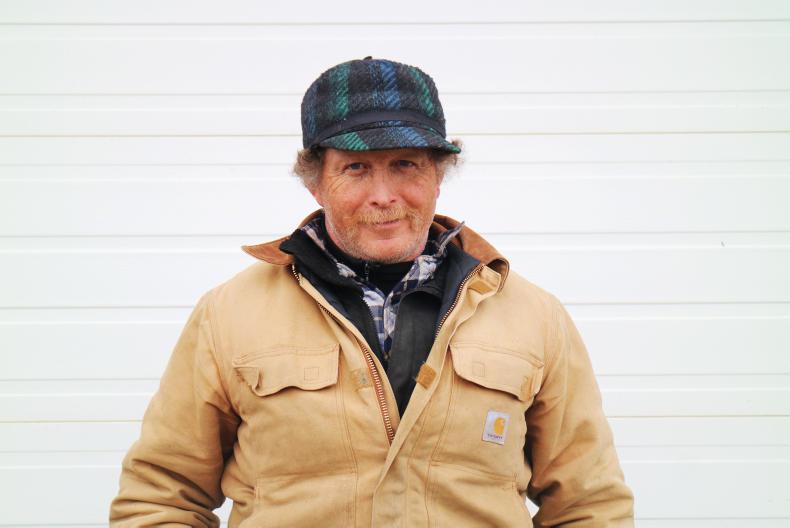He runs a herd of 520 purebred Hereford cows, as well as 20 commercials. The vast majority of the herd calves in February and March, with some in April.Winters here are harsh and most commercial ranchers calve later than this by design. However, as in Ireland, seedstock producers are aiming for a fixed period of sales where age and weight matter hugely, hence the early calving pattern.
He runs a herd of 520 purebred Hereford cows, as well as 20 commercials. The vast majority of the herd calves in February and March, with some in April.
Winters here are harsh and most commercial ranchers calve later than this by design. However, as in Ireland, seedstock producers are aiming for a fixed period of sales where age and weight matter hugely, hence the early calving pattern.
Calving
While most commercial ranchers have little or no housing facilities, seedstock ranchers generally have some class of calving and/or housing facilities. That said, the aim is for all cows to calve on their own, outdoors.
“We helped 5% to 6% of cows at calving this year and I was a little disappointed with that to be honest,” Andy told the Irish Farmers Journal.
 The best 120 bulls are sold as two-year-olds both privately and at a special Lilybrook Hereford annual sale. Those that don’t make the cut are castrated and sent to a local feedlot.
The best 120 bulls are sold as two-year-olds both privately and at a special Lilybrook Hereford annual sale. Those that don’t make the cut are castrated and sent to a local feedlot.
Bulls that go to the feedlot could have had a high birth weight, low weaning weight or have poor colour, docility, physical structure or ultrasound scan results (marbling).

Andy runs a herd of 520 purebred Hereford cows, as well as 20 commercials.
Rotational grazing
Andy’s ranch encompasses just under 3,700 acres, of which 450 are planted in barley to produce wholecrop silage for feeding. Rotational grazing is a relatively new phenomenon in North America and Andy has bought into the idea – paddocking out his farm. His paddocks range from 25 to 55 acres and he moves animals every seven to 10 days.

Lilybrook Herefords replacement heifers. All calve down at two years of age.
“Ideally, I would run my cattle in groups of 200 and have less time in a paddock, but there are only certain times in the year we can do that, what with targeting sires toward certain groups of cows and heifers,” Andy said. “Grazing in this way keeps grass quality good and allows me to have high stocking rates – we’re at 15 cows per acre here, well ahead of the average. I can graze most paddocks twice a year, where others could only get one grazing.”

One of Lilybrook Herefords’ stock bulls, imported from Ireland as an embryo.
Angus
With the strength and marketing power of the Certified Angus brand, Andy admits that his own breed is a long way off competing.
“You look at what they’ve done with the Certified Angus brand and the marbling story – it’s a serious success story. I don’t think we have the resources to do what they’ve done, but I think that Hereford has a place. Angus has selected too hard for small birthweights in recent times and as a whole their performance and ruggedness is suffering slightly. This is where the Hereford can come in and add frame and hardiness. In fact, 10% to 15% of our customers are black (Angus) herds. Hereford progeny from black cows keep their colour and so retain the Angus bonus at slaughter,” Andy concluded.
Read more
Pictures and podcast: wet weather hits Canadian farmers
Watch: camera at the mart in Mankota, Saskatchewan, Canada
Watch: moving cows on horseback in the Rocky Mountains





SHARING OPTIONS: